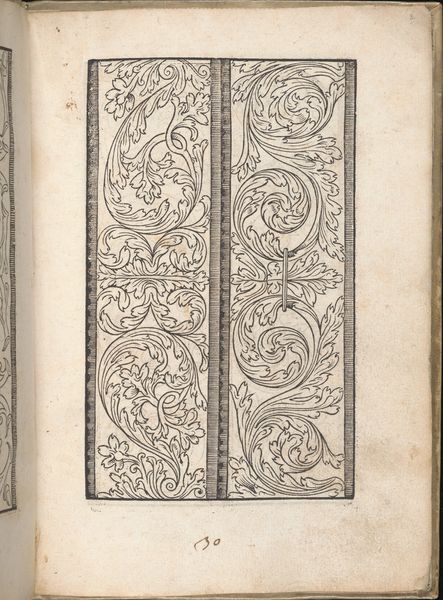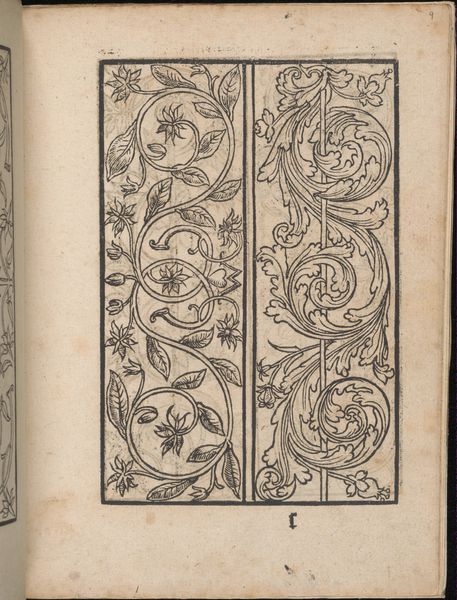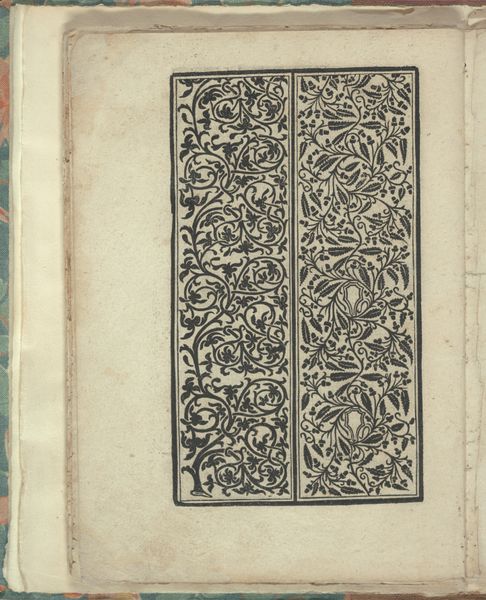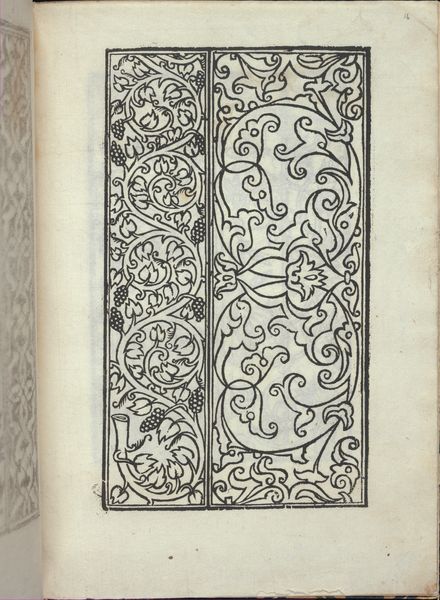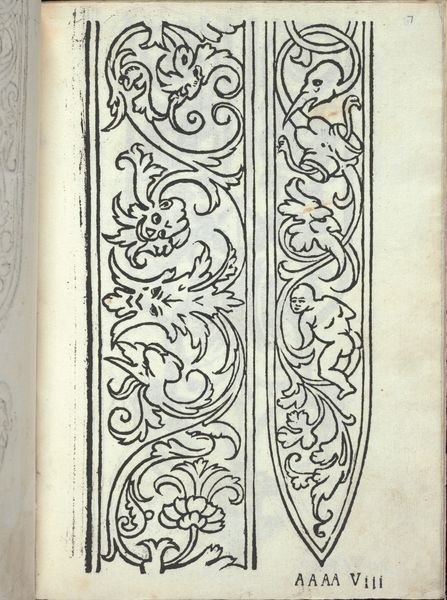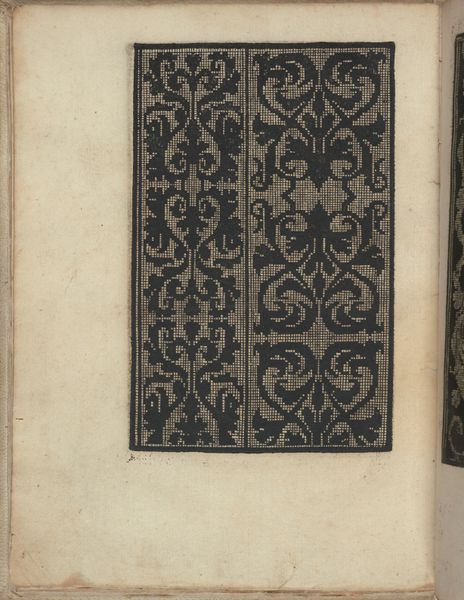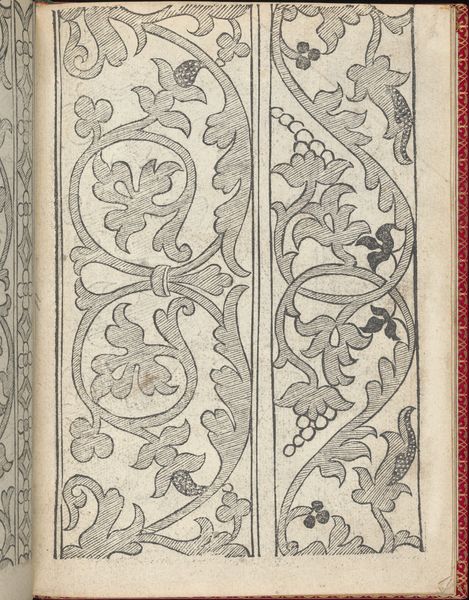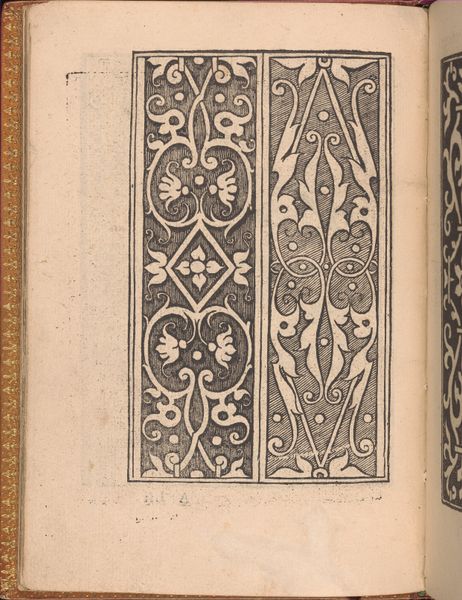
Ce est ung tractat de la noble art de leguille ascavoir ouvraiges de spaigne... page 22 (recto) 1527 - 1540
0:00
0:00
drawing, graphic-art, print, intaglio, paper, ink, engraving
#
drawing
#
graphic-art
# print
#
intaglio
#
paper
#
11_renaissance
#
ink
#
engraving
Dimensions: Overall: 6 7/8 x 5 11/16 in. (17.5 x 14.5 cm)
Copyright: Public Domain
This is page 22 from *Ce est ung tractat de la noble art de leguille ascavoir ouvraiges de spaigne...*, a woodcut on paper, by Willem Vosterman. Printed pattern books like this one circulated widely in the 16th century. They were crucial for the transmission of designs, particularly for needlework, across different regions and social classes. These books offered women patterns for decorating clothing, household textiles, and religious items. Embroidery, often seen as women's work, held a complex social position. It was a creative outlet, but also a symbol of domesticity and female virtue. The patterns themselves frequently incorporated symbols of status, cultural identity, and religious affiliation. The act of stitching became a way to negotiate personal expression within the confines of societal expectations. Consider how the circulation of these patterns created a shared visual language across Europe, while simultaneously reinforcing gendered divisions of labor and cultural values. It’s a fascinating intersection of art, craft, and social history.
Comments
No comments
Be the first to comment and join the conversation on the ultimate creative platform.
